Across history and geographies, a sinister pattern emerges, like a shadow cast by the machinery of power, where movements born of noble intent – seeking justice, equity, or liberation – are systematically infiltrated, undermined, and demonized. This orchestrated sabotage, cloaked in sophisticated propaganda, transforms cries for freedom into caricatures of chaos, paving the way for mass violence, genocide, and the perpetuation of oppressive structures. Kenya, with its turbulent history of resistance and repression, stands as a poignant case study, but the phenomenon reverberates globally, from colonial eras to modern information battlegrounds. By dissecting this strategy, illuminating its mechanics, and debunking its enduring mythos, Kenyans and global citizens alike can arm themselves to detect and dismantle these narratives before they metastasize into atrocities.
The Anatomy of Demonization: A Global Playbook
The strategy of demonization operates like a venomous vine, wrapping itself around the roots of righteous movements to choke their vitality. It begins with a spark – a genuine grievance, be it land dispossession, economic exclusion, or systemic injustice. In Kenya, the Kenya Land and Freedom Army (KLFA) emerged in the 1950s to resist colonial land theft, only to be rebranded by British authorities as the “Mau Mau,” a term evoking savagery and lawlessness. This linguistic sleight of hand was no accident; it was a deliberate stroke of the propagandist’s brush, painting a liberation movement as a barbaric insurgency to justify a brutal crackdown. The British colonial machinery, cloaked in the guise of order, unleashed a campaign of torture, internment, and execution, leaving tens of thousands dead or displaced.
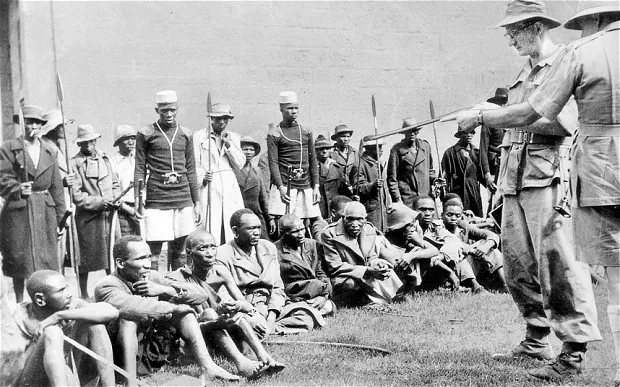
By rebranding a land and freedom movement into a criminal vigilante group, British invaders succeeded in reclaiming the narrative and justifying horrific atrocities
This tactic is not unique to Kenya. In Rwanda, the 1994 genocide was preceded by a chilling campaign on Radio Télévision Libre des Mille Collines (RTLM) owned by ICC-indictee Felicien Kabuga, which branded Tutsis and moderate Hutus as inyenzi (cockroaches) and inzoka (snakes). These dehumanizing metaphors stripped their targets of humanity, priming the populace for the horrors that followed – nearly a million slaughtered in a hundred days. Similarly, in apartheid South Africa, liberation movements like the African National Congress were labeled “terrorist” to legitimize state violence, while in Nazi Germany, Jews were depicted as vermin to rationalize the Holocaust. The playbook is universal: reframe the oppressed as threats, and the oppressor’s violence becomes a regrettable necessity.
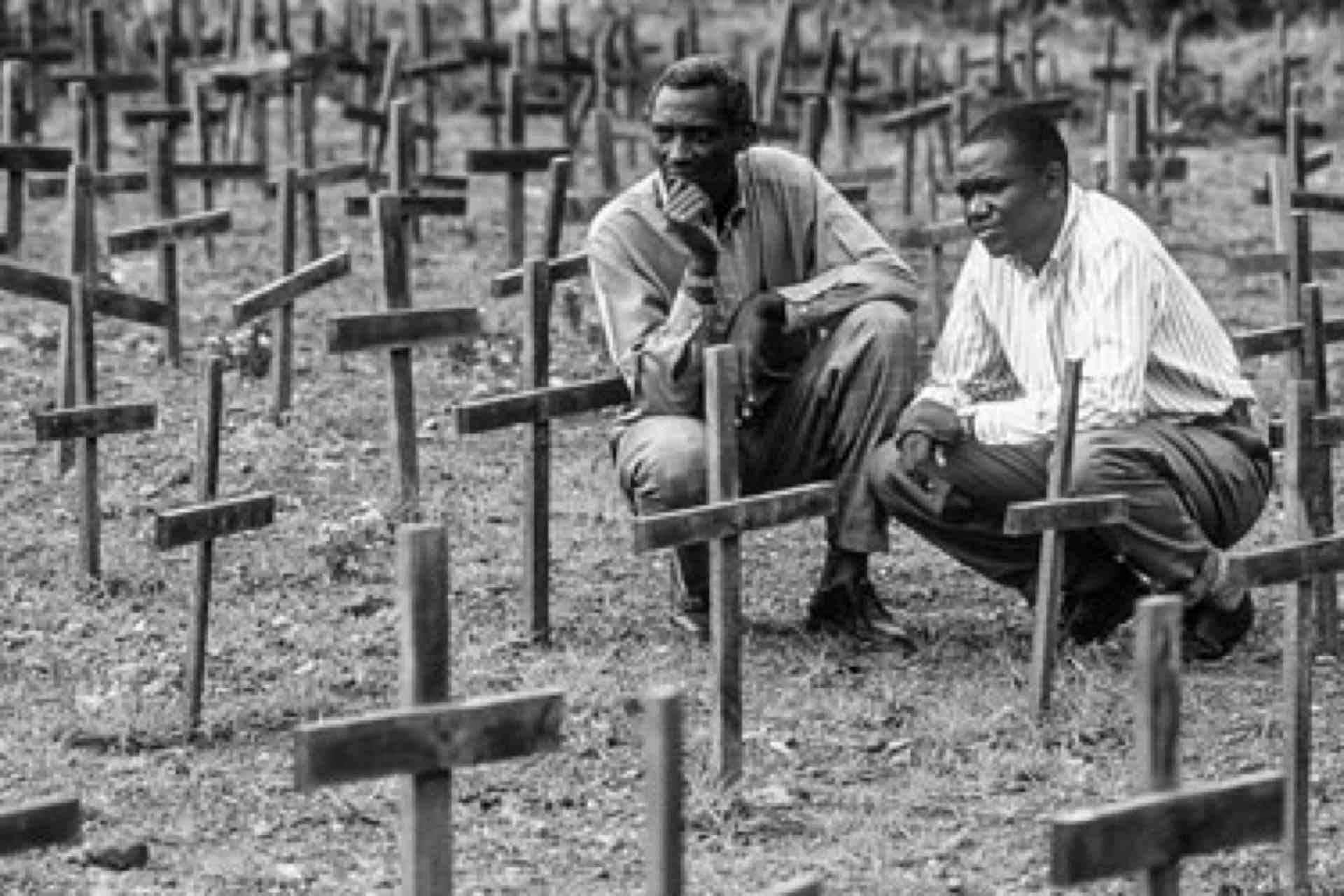
By demonizing Tutsi’s and moderate Hutu’s as cockroaches, the establishment lay the ground for genocide by alienating sections of the population
In Kenya’s post-independence era, this pattern persists, cloaked in neocolonial garb. The Mungiki, originally a movement protesting land theft by Kikuyu elites, was hijacked by political operatives under Presidents Daniel Arap Moi and Mwai Kibaki. By propping up figures like Maina Njenga and his violent cadres, the state transformed a legitimate grievance into a spectacle of chaos, marked by heinous acts like forced female circumcision. This orchestrated descent into criminality alienated the public, enabling John Michuki’s Kwe Kwe Squad to unleash extrajudicial killings with impunity. Hundreds of young men, guilty only of their youth and proximity to dissent, were erased, their deaths cloaked in the narrative of “restoring order.”
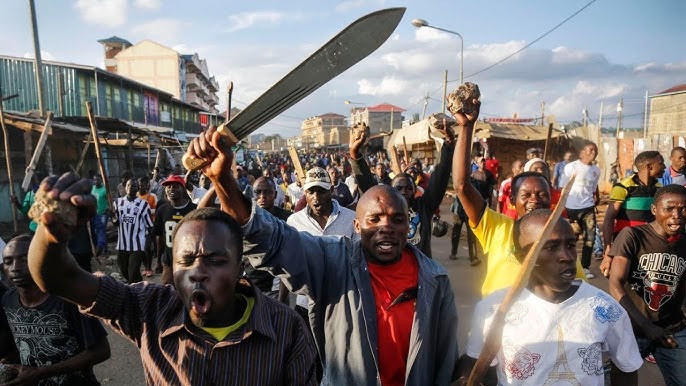
The media’s fetishization of machete-wielding goons infiltrating righteous movements, serves to spread fear and deter the masses from joining noble causes like protests
The 2007/2008 Kenyan post-election violence, which sought to displace Kikuyus from the Rift Valley, stands as a stark illustration of how orchestrated hate campaigns can demonize a community to justify atrocities, aligning with the global playbook of manufacturing consent for violence. William Ruto, then a prominent political figure, was later charged by the International Criminal Court (ICC) for allegedly sponsoring this violence, which saw over 1,200 deaths and 600,000 displacements. Preceding the violence, a vicious propaganda campaign unfolded on Kass FM, led by journalist Joshua Arap Sang, who branded Kikuyus as madoadoa (stains) that needed to be “washed out.” This dehumanizing rhetoric, steeped in ethnic vitriol, painted Kikuyus as interlopers in the Rift Valley, stripping them of their humanity and framing their expulsion as a moral necessity. By inflaming ethnic tensions, this campaign sowed the seeds for targeted attacks, including arson, machete killings, and mass evictions, as communities were primed to see violence against Kikuyus as cleansing rather than criminal.
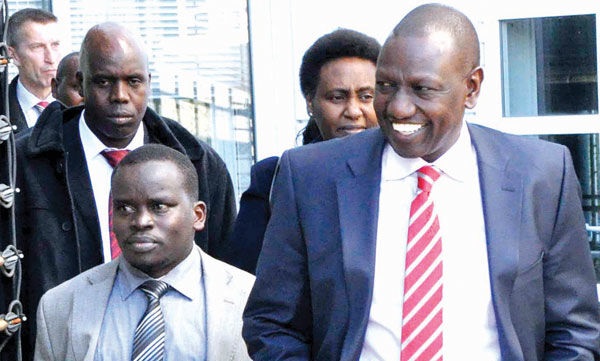
Former Kass FM anchor Joshua Arap Sang (left) spent months demonizing Kikuyu’s through coded messaging prior to the 2007/2008 post election violence
This episode fits seamlessly into the broader schema of demonizing victims to legitimize atrocities, as seen in Kenya’s historical and contemporary struggles. The madoadoa narrative, much like the “Mau Mau” label for the KLFA or “cockroaches” for Tutsis in Rwanda, weaponized language to erode empathy and justify ethnic cleansing. Sang’s broadcasts on Kass FM, which saw him charged with incitement by the ICC, served as a megaphone for elite-driven agendas, manipulating Kalenjin communities to view Kikuyus as threats to their land and identity. This orchestrated hate, backed by political actors like Ruto, exemplifies how propaganda infiltrates collective consciousness, transforming grievances into genocidal impulses. By exposing this pattern – where media becomes a tool for dehumanization – Kenyans can recognize the early tremors of such narratives, leveraging digital platforms and historical awareness to counter divisive rhetoric before it snowballs into violence.
The 2024 Gen Z protests in Kenya, driven by youth demanding accountability and economic justice, faced a similar fate. A coalition of political and neocolonial elites – led by President William Ruto, former President Uhuru Kenyatta, British High Commissioner to Kenya Neil Wigan, ODM Leader Raila Odinga, Nairobi Governor Sakaja Johnson, Nairobi MCA’s and intelligence operatives led by Noordin Haji – orchestrated a campaign of infiltration and sabotage. Paid goons, masquerading as protesters, looted businesses, torched vehicles, and staged violent clashes, crafting a narrative of anarchy. This manufactured chaos inflamed Kenya’s business community, whose myopic focus on profit over principle led them to fund private guards to brutalize the very youth fighting for a collective future. The result was chilling: mass abductions, extrajudicial killings, and bodies dumped at sites like Kware, with dissenters like Francis Gaitho silenced through arrests and media smear campaigns.
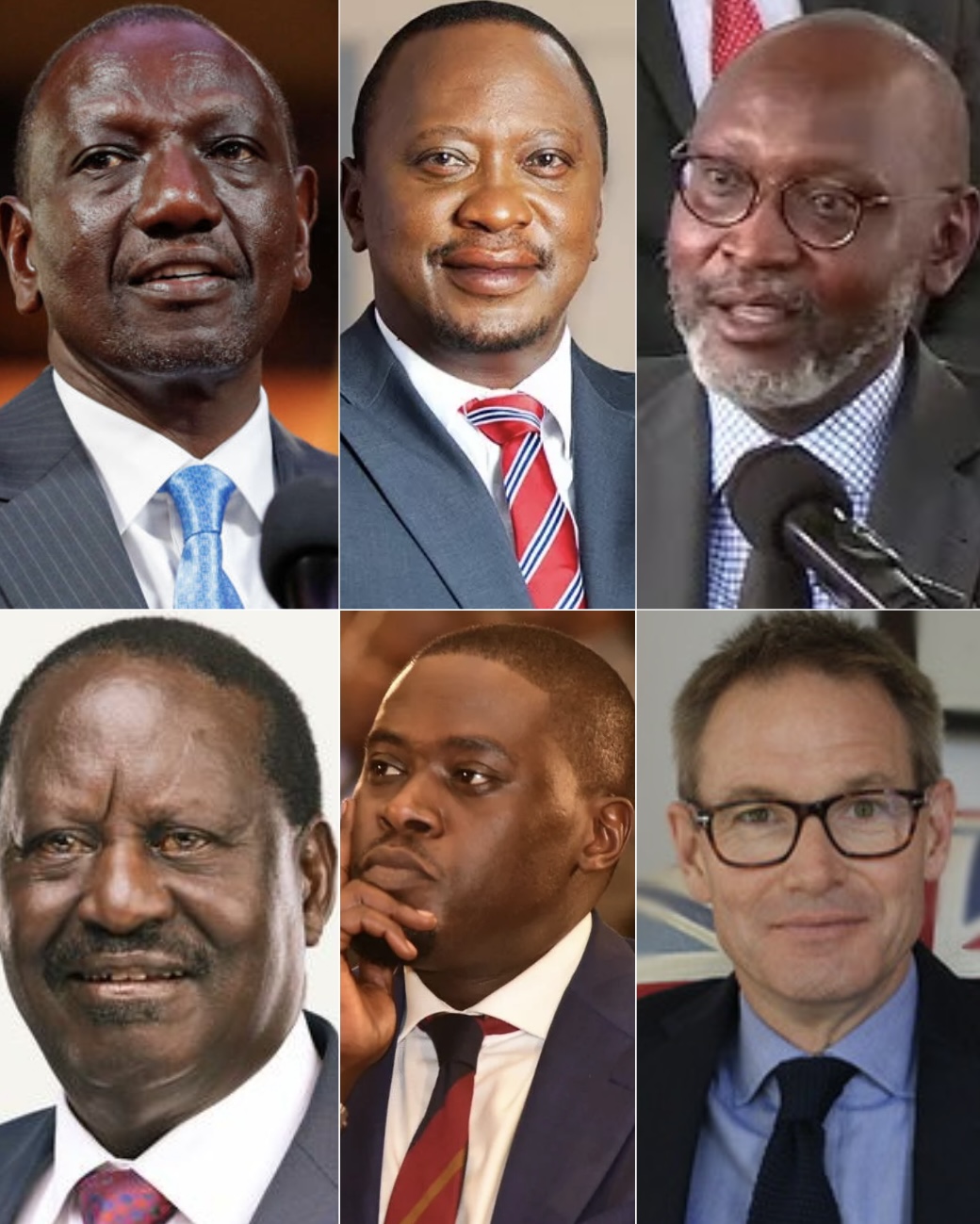
These individuals have emerged as most invested in stalling the wave of enlightenment from blowing into a fully-fledged liberation movement because they benefit from the current configuration of oppressive structures
Francis Gaitho’s arrest and demonization by Kenya’s Directorate of Criminal Investigations (DCI) and Office of the Director of Public Prosecutions (ODPP) exemplify the state’s sophisticated propaganda machinery within the broader schema of undermining dissent. As Gaitho connected the dots between state-orchestrated violence and the Gen Z protests, his arrest on trumped-up charges and the subsequent media smear campaign – portraying him as a criminal – served to discredit his revelations. This tactic mirrors historical patterns where truth-tellers are vilified to suppress narratives challenging oppressive structures. By leveraging state-controlled media and legal intimidation, the DCI and ODPP aimed to erode public trust in Gaitho, diverting attention from the Kware dumpsite massacres and reinforcing the narrative of protesters as threats, thus justifying brutal crackdowns while maintaining neocolonial hegemony.

Activist and blogger Francis Gaitho was charged for simply debunking the false narrative presented by DCI after the discovery of dismembered bodies at the Kware dumpsite
In the scorching heat of Kenya’s 2024 Gen Z protests, activist Boniface Mwangi’s audacious appearance with coffins at a demonstration was a blood-chilling spectacle, a grotesque tableau designed to douse the flames of youthful rebellion with terror. These grim wooden boxes, stark symbols of death’s icy grip, were not mere props but a calculated assault on the psyche of a generation unaccustomed to such macabre theatrics. The images of Mwangi, flanked by these harbingers of mortality, seared themselves into the collective consciousness, broadcasting a visceral message: dissent invites the grave. This horrifying stunt, likely co-opted by state-aligned forces, weaponized fear to demobilize young Kenyans, whose courage had fueled demands for justice. The coffins’ stark presence whispered of slaughter, evoking nightmares of bodies piling up in morgues or dumped in Kware’s wretched pits, effectively paralyzing many who might have marched, their spirits crushed under the weight of this ghoulish warning.
This bone-chilling strategy fits the sinister blueprint of extinguishing legitimate movements by cloaking them in savagery’s shadow, a tactic as old as oppression itself. By parading coffins, the architects of this horror show – Mwangi himself and puppeteers pulling his strings like Anthony Gichuru – sought to transmute a vibrant uprising into a funeral dirge, scaring off Kenya’s youth with visions of their own mangled corpses. The imagery was a psychological guillotine, severing the resolve of a generation not yet hardened to such barbaric intimidation. It mirrored the demonization of Mau Mau, Mungiki, and others, where terror is staged to paint resistance as a death sentence. For young Kenyans, unversed in the gore of such tactics, the coffins were a suffocating fog, snuffing out the candle of their defiance.
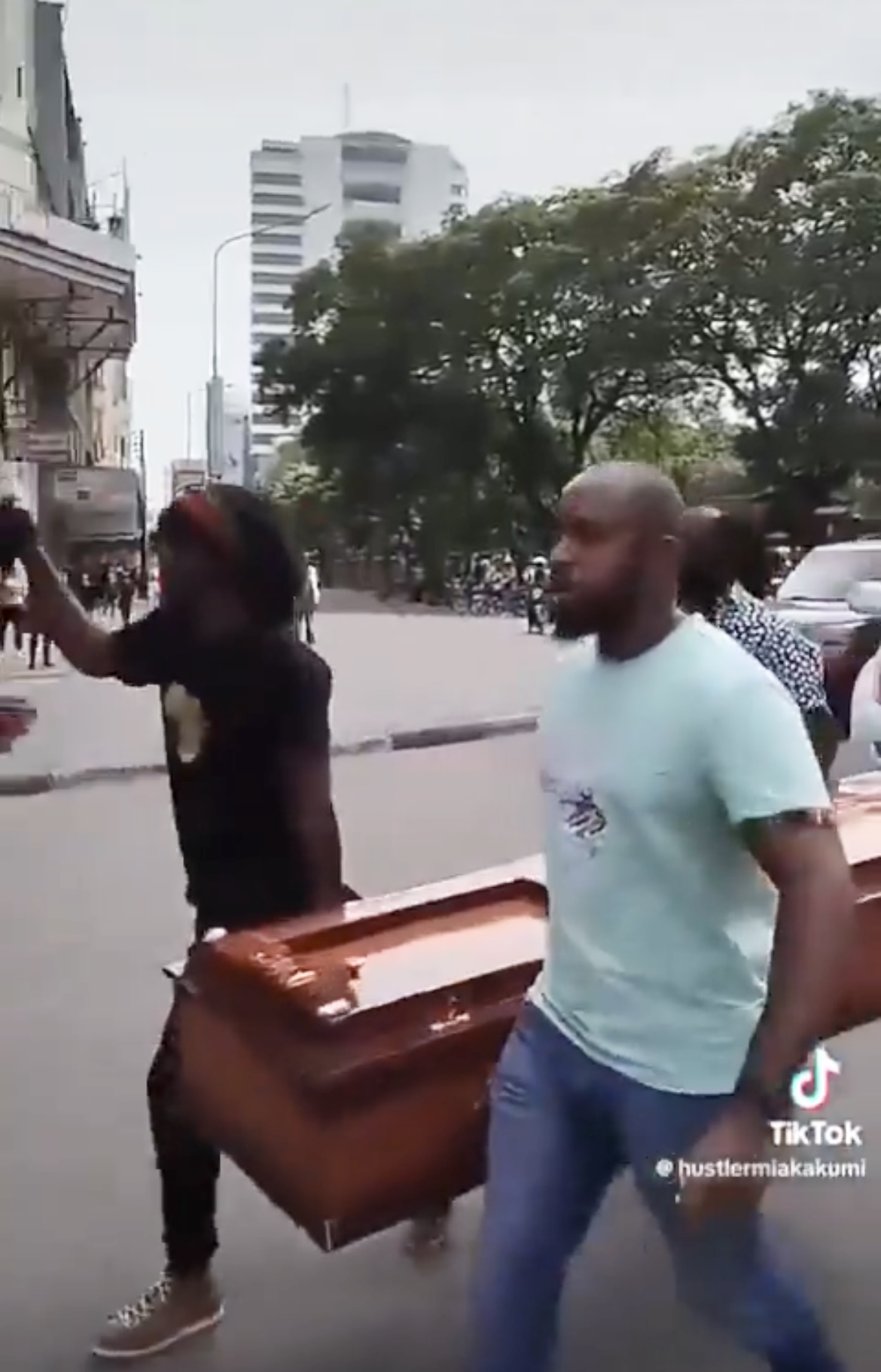
Activist Boniface Mwangi shocked many when together with his goons who work at Sema Ukweli, strutted into Nairobi CBD with coffins and a professional media crew trailing them so as to disseminate the message of fear to young protestors
The Mechanics of Infiltration and Propaganda
This strategy operates like a malignant orchestra, each instrument playing a role to drown out the melody of justice. First, movements are infiltrated by state or elite-sponsored actors who escalate peaceful protests into violence, sowing discord. Second, propaganda – through media, radio, or social platforms – reframes the movement’s intent, casting it as a threat to stability. Third, public consent is manufactured, often by exploiting class divides or economic anxieties, as seen in Kenya’s business community turning against Gen Z. Finally, the state unleashes disproportionate force, cloaked in the rhetoric of law and order, while dissenters are silenced through arrests, disappearances, or character assassination.
This choreography thrives on dehumanization. By branding KLFA as “Mau Mau,” Tutsis as “cockroaches,” the Kikuyu’s as Madoadoa or Gen Z as “looters,” oppressors strip their targets of agency and empathy. Metaphors are weaponized, transforming humans into abstractions – pests, criminals, or threats – that can be eradicated without moral qualms. In the digital age, this propaganda is amplified through social media, where bots, paid influencers, and state-aligned media outlets churn out narratives at lightning speed, shaping public perception before truth can take root.
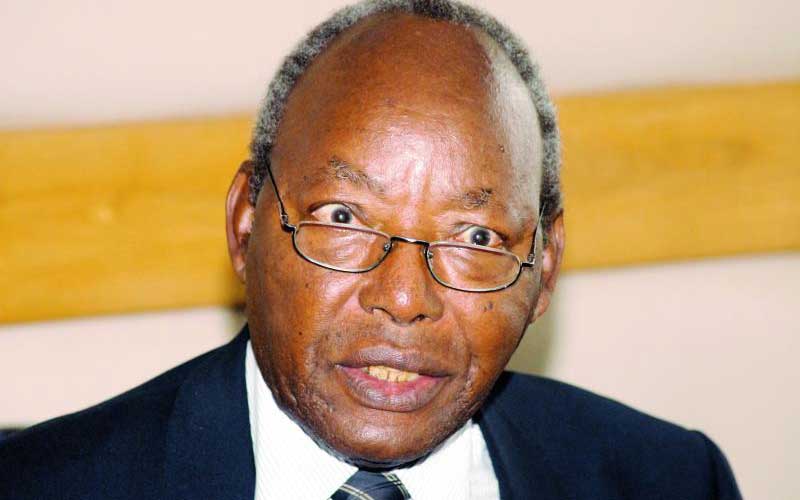
Former Interior Minister John Njoroge Michuki was no hero. He exploited divisive narratives to engineer a genocide against young Kenyan men under the guise of eradicating a state-sponsored menace called Mungiki
Debunking the Myth of Invincibility
Yet, the myth that this strategy remains unassailable in modern information warfare is crumbling. The digital era, while a double-edged sword, empowers citizens to challenge orchestrated narratives. Platforms like X, despite their vulnerabilities to manipulation, allow real-time exposure of state excesses. Citizen journalists, whistleblowers, and activists can document atrocities, as seen in videos of Kenya’s 2024 protest crackdowns, which pierced the veil of official denials. Open-source intelligence, from geolocated footage to leaked documents, undermines the state’s monopoly on truth.
Moreover, global awareness of these tactics is growing. Movements like Black Lives Matter or Palestine’s resistance have exposed how state propaganda demonizes dissent, creating solidarity across borders. In Kenya, the Gen Z protests demonstrated a generation fluent in digital tools, capable of countering disinformation with memes, livestreams, and hashtags. The myth of propaganda’s omnipotence falters when communities harness information to reclaim their narrative.
Enlightening Kenyans: Detecting the Narrative Before It Snowballs
To prevent these narratives from spiraling into genocidal actions, Kenyans must cultivate a vigilant, discerning mindset. Here are strategies to detect and disrupt the machinery of demonization:
1. Question Dehumanizing Language: When media or officials label protesters as “thugs,” “looters,” or other pejoratives, scrutinize the intent. Such terms are often the first notes of a propaganda symphony, designed to erode empathy. Cross-reference with primary sources – citizen videos, X posts, or firsthand accounts – to uncover the truth.
2. Trace the Source of Chaos: Violence during protests is often staged. When looting or destruction erupts, ask: Who benefits? State-sponsored infiltrators thrive on creating spectacles that discredit movements. Document suspicious actors and share evidence on platforms like X to expose their role.
3. Amplify Authentic Voices: Elevate grassroots accounts over state-aligned media. During the Gen Z protests, citizen journalists on X provided real-time updates, countering official narratives. Support and share credible voices to drown out propaganda.
4. Recognize Class Manipulation: Elites often exploit economic divides using the fading “us vs them construct, as seen in Kenya’s business community turning against protesters. William Ruto successfully weaponized this class manipulation through his “hustler vs dynasty” demagoguery in the 2022 elections. Educate communities about shared interests – youth fighting for economic justice benefit all, not just the marginalized.
5. Organize Digital Resistance: Use encrypted platforms like Signal or Telegram to coordinate and share information securely. Digital literacy – understanding bots, deepfakes, and algorithmic bias – equips citizens to filter truth from noise.
6. Build Historical Memory: Kenya’s history, from Mau Mau to Mungiki to Gen Z, reveals a recurring script. Educate youth about past movements to recognize patterns of infiltration and demonization. Knowledge is a shield against manipulation.
7. Demand Accountability: When figures like Francis Gaitho are targeted, rally collective support. Public pressure, amplified online and offline, can deter state overreach. Petitions, protests, and international advocacy can shine a light on abuses.
Conclusion: Reclaiming the Narrative
The demonization of righteous movements is a well-worn tactic, a venomous vine that strangles justice to preserve power. From Kenya’s KLFA to Rwanda’s Tutsis to the global stage, this strategy relies on infiltration, propaganda, and manufactured consent to justify atrocities. Yet, in the information age, its grip is loosening. Kenyans, armed with digital tools and historical awareness, can dismantle these narratives before they ignite genocidal flames. By questioning language, tracing chaos, amplifying truth, and fostering solidarity, the people can uproot the vine of oppression, cultivating a future where justice, not hegemony, takes root. The power lies not in the hands of the orchestrators but in the collective will to see through the shadows and reclaim the light of truth.

